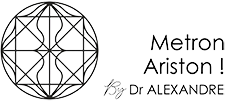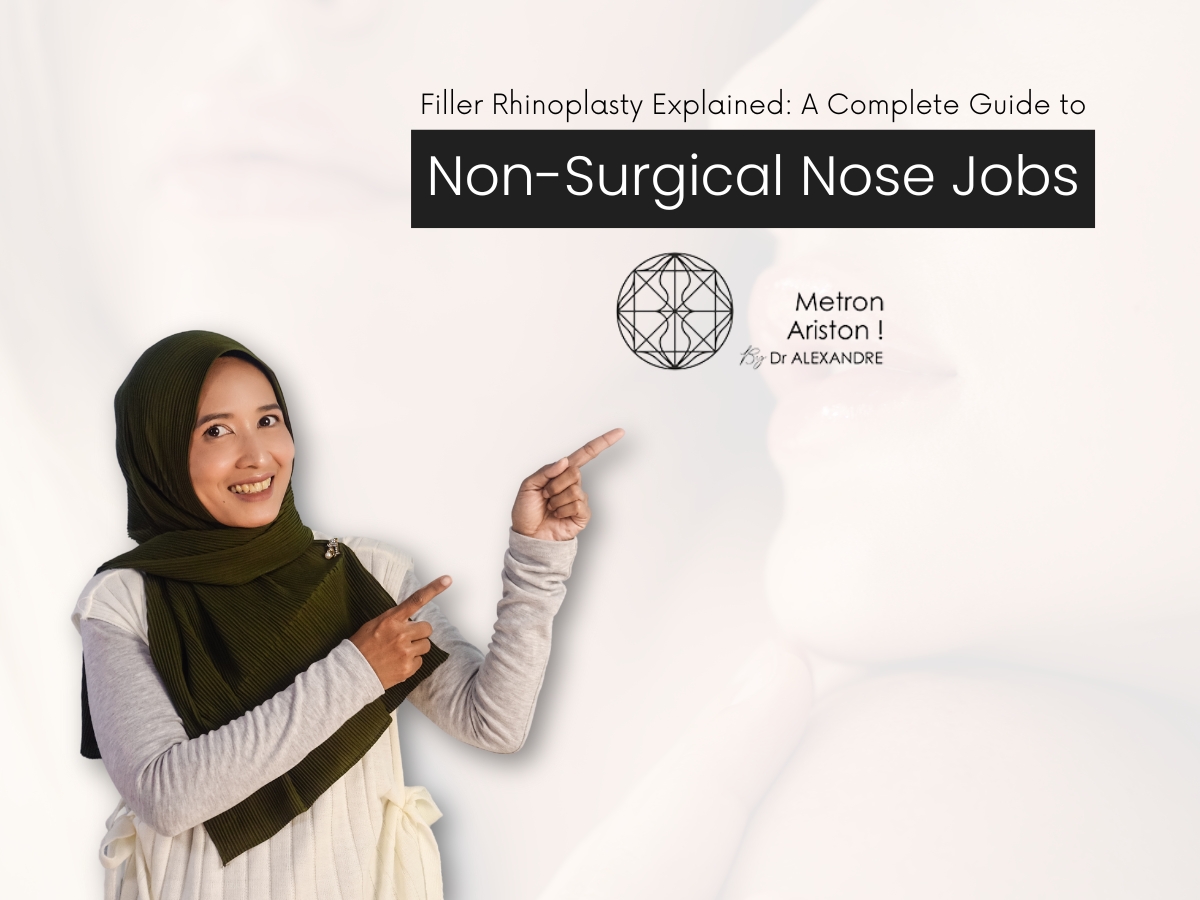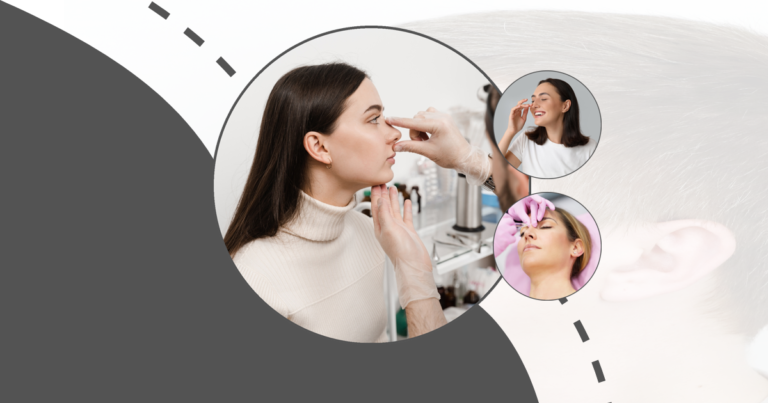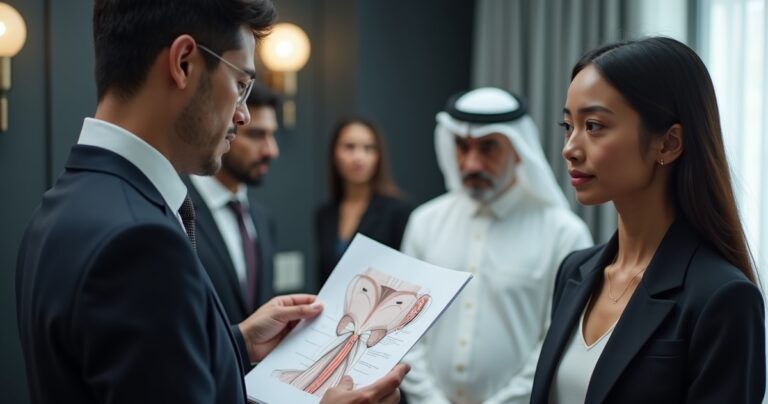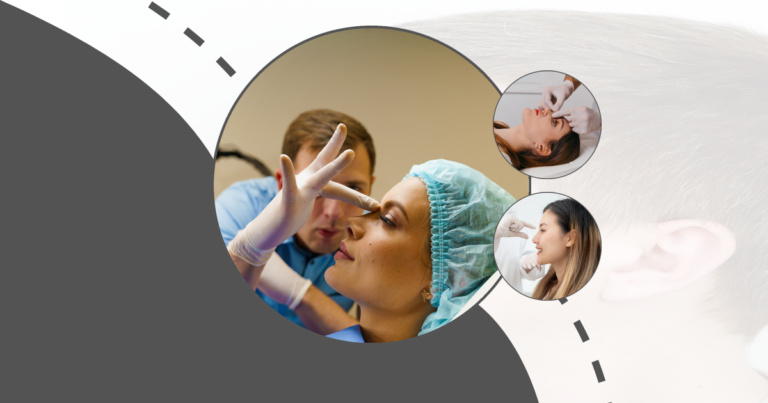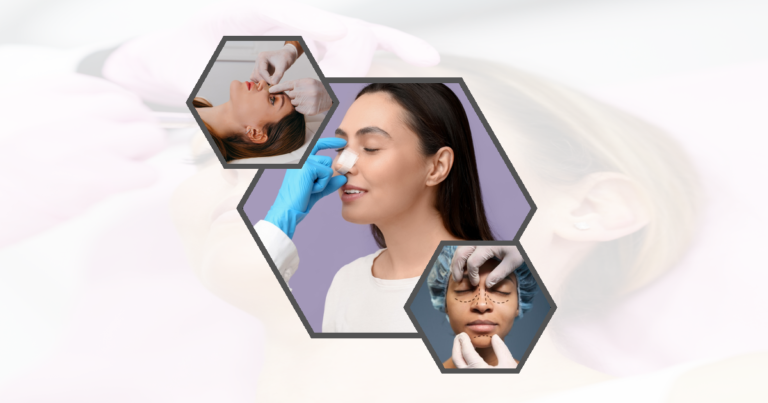Filler Rhinoplasty Explained: A Complete Guide to Non-Surgical Nose Jobs
Introduction to Filler Rhinoplasty
Filler Rhinoplasty, often referred to as a non-surgical nose job, is a revolutionary cosmetic procedure that has gained immense popularity in recent years. Unlike traditional surgical rhinoplasty, this technique involves the use of dermal fillers to reshape and contour the nose without the need for invasive surgery. This procedure offers a quick and effective solution for individuals seeking to enhance their nasal appearance with minimal downtime.
Dubai Nose Surgery helps people change the shape of their nose
many people travel to dubai for nose surgery because of skilled doctors
What is Filler Rhinoplasty?
Filler Rhinoplasty is a non-invasive cosmetic procedure that uses injectable dermal fillers to alter the shape of the nose. This technique is ideal for individuals looking to correct minor imperfections such as bumps, asymmetry, or a drooping nasal tip. Unlike surgical rhinoplasty, which requires incisions and a lengthy recovery period, filler rhinoplasty provides immediate results with little to no downtime.
- Definition and Overview : Filler Rhinoplasty involves the strategic injection of dermal fillers into specific areas of the nose to achieve the desired shape and contour. The procedure is typically performed in a clinical setting and takes less than an hour to complete.
- Comparison with Surgical Rhinoplasty : While surgical rhinoplasty offers permanent results, it involves a more complex and invasive process. Filler rhinoplasty, on the other hand, is temporary but allows for adjustments and reversibility, making it an attractive option for those hesitant about surgery.
Benefits of Non-Surgical Nose Jobs
Non-surgical nose jobs offer a range of benefits that make them an appealing choice for many individuals. These advantages include instant results, minimal downtime, reversibility, and cost-effectiveness.
Instant Results
One of the most significant benefits of filler rhinoplasty is the immediate transformation it provides. Patients can see the changes in their nasal appearance right after the procedure, allowing for instant gratification.
Minimal Downtime
Unlike surgical procedures that require weeks of recovery, filler rhinoplasty involves minimal downtime. Most patients can resume their daily activities immediately after the treatment, making it a convenient option for those with busy lifestyles.
- Reversibility : If a patient is not satisfied with the results, the procedure can be reversed using an enzyme that dissolves the filler, offering peace of mind.
- Cost-Effectiveness : Filler rhinoplasty is generally more affordable than surgical options, making it accessible to a broader audience.
The Filler Rhinoplasty Procedure
Understanding the filler rhinoplasty procedure is crucial for anyone considering this treatment. It involves several steps, from consultation and planning to the actual injection of dermal fillers.
Consultation and Planning
Before undergoing filler rhinoplasty, a thorough consultation with a qualified provider is essential. During this session, the provider will assess the patient’s nasal structure, discuss their goals, and create a personalized treatment plan.
Types of Dermal Fillers Used
Various dermal fillers can be used in filler rhinoplasty, each with unique properties. Hyaluronic acid-based fillers are commonly used due to their safety and reversibility.
- Step-by-Step Process : The procedure begins with the application of a numbing cream to ensure comfort. The provider then injects the filler into specific areas of the nose, carefully sculpting it to achieve the desired shape.
|
Step |
Description |
|
1 |
Consultation and assessment |
|
2 |
Application of numbing cream |
|
3 |
Injection of dermal fillers |
|
4 |
Sculpting and shaping |
Recovery and Aftercare
Proper recovery and aftercare are essential to ensure the best results from filler rhinoplasty. While the procedure itself is quick, following the recommended guidelines can enhance the longevity of the results.
Immediate Post-Procedure Care
After the procedure, patients may experience mild swelling or redness, which typically subsides within a few days. It is advisable to avoid strenuous activities and excessive sun exposure during this time.
Long-Term Maintenance
To maintain the results of filler rhinoplasty, patients may require touch-up treatments every 6 to 12 months. Regular follow-ups with the provider can help monitor the results and make necessary adjustments.
- Avoid strenuous activities : Refrain from heavy exercise for at least 24 hours post-procedure.
- Sun protection : Use sunscreen to protect the treated area from UV damage.
Filler Rhinoplasty vs. Surgical Rhinoplasty
When considering nasal enhancement, it’s essential to weigh the differences between filler rhinoplasty and surgical rhinoplasty.
Key Differences
Filler rhinoplasty is non-invasive, offering temporary results with minimal downtime. In contrast, surgical rhinoplasty provides permanent changes but requires a more extensive recovery period.
Longevity of Results
Understanding the longevity of filler rhinoplasty results is crucial for setting realistic expectations.
How Long Do Filler Rhinoplasty Results Last?
The results of filler rhinoplasty typically last between 6 to 12 months, depending on the type of filler used and individual factors such as metabolism.
Touch-Up Treatments
To maintain the desired appearance, patients may opt for touch-up treatments as the filler gradually dissolves over time.
- Duration of results : 6 to 12 months on average.
- Regular touch-ups : Recommended every 6 to 12 months for sustained results.
Cost of Filler Rhinoplasty
The cost of filler rhinoplasty can vary based on several factors, including the provider’s experience and the type of filler used.
Average Pricing
On average, filler rhinoplasty can cost between 00 to ,500 per session. This is significantly less than surgical rhinoplasty, making it a more affordable option for many.
Factors Affecting Cost
The cost may vary depending on the geographic location, the provider’s expertise, and the amount of filler required to achieve the desired results.
- Geographic location : Prices may vary based on the region.
- Provider’s expertise : More experienced providers may charge higher fees.
Choosing a Qualified Plastic Surgeon For Filler Rhinoplasty
Selecting a qualified provider is crucial for ensuring a safe and successful filler rhinoplasty experience. A skilled and experienced professional is essential. Dr. Alexandre Dionys, a board-certified plastic surgeon, is renowned for his exceptional expertise and personalized care. Learn more about Dr. Alexandre Dionys on our About page.
Why Credentials and Experience Matter
Selecting the right practitioner is critical to achieving the best results and ensuring your safety. Here’s what to consider:
- Board Certification : Always ensure your surgeon is certified by a recognized board.
- Years of Experience : Dr. Alexandre Dionys brings years of expertise and a track record of success in plastic surgery.
- Patient Reviews : Check testimonials from previous patients to gain insights into their experiences.
Questions to Ask During Consultation
During the consultation, patients should ask about the provider’s experience, the types of fillers used, and the expected outcomes to make an informed decision.
- Verify credentials : Ensure the provider is licensed and experienced.
- Discuss expectations : Communicate your goals and concerns.
Filler Rhinoplasty for Specific Concerns
Filler rhinoplasty can address various specific nasal concerns, providing tailored solutions for each individual.
Dorsal Hump Correction
For individuals with a prominent dorsal hump, filler rhinoplasty can create a smoother nasal profile by adding volume above and below the hump.
Tip Refinement
Filler rhinoplasty can enhance the nasal tip’s definition and projection, providing a more refined appearance without surgery.
- Bridge Augmentation : Adding volume to the nasal bridge can create a more balanced and harmonious facial profile.
Combining Filler Rhinoplasty with Other Treatments
Filler rhinoplasty can be combined with other cosmetic treatments for comprehensive facial rejuvenation.
Complementary Procedures
Procedures such as Botox or dermal fillers in other areas of the face can complement the results of filler rhinoplasty, enhancing overall facial harmony.
Holistic Facial Rejuvenation
Combining treatments allows for a more holistic approach to facial rejuvenation, addressing multiple concerns in a single session.
- Botox : Can be used to smooth wrinkles and enhance facial symmetry.
- Dermal fillers : Used in other areas to achieve a balanced look.
Future Trends in Non-Surgical Rhinoplasty
The field of non-surgical rhinoplasty is continually evolving, with new techniques and technologies emerging.
Emerging Techniques and Technologies
Advancements in filler materials and injection techniques are enhancing the precision and outcomes of filler rhinoplasty. These innovations promise even more natural and long-lasting results in the future. Rhinoplasty procedures categorized Doctors can change the shape of your nose in different ways like making it smaller bigger or fixing breathing problems These are called different types of rhinoplasty procedures Vibration-powered rhinoplasty technique Doctors use special tools that vibrate to reshape noses during surgery This new method called
Innovative rhinoplasty technique uses new methods to reshape noses Doctors can now change nose size and shape with less pain using Nose function improvement helps you breathe better and smell things more clearly It can make your nose work better so you feel healthier overall
Nose surgery considerations Before getting nose surgery think about how you want your nose to look and talk to a doctor about possible risks and recovery time
Preparing for Your Filler Rhinoplasty Appointment
Proper preparation is essential for a successful filler rhinoplasty experience.
Pre-Procedure Guidelines
Patients should avoid blood-thinning medications and supplements before the procedure to minimize the risk of bruising. It is also advisable to discuss any allergies or medical conditions with the provider.
What to Expect on the Day of Treatment
On the day of the procedure, patients can expect a brief consultation followed by the application of a numbing cream. The actual injection process is quick, and patients can resume their daily activities immediately afterward.
- Avoid blood thinners : Refrain from taking aspirin or other blood-thinning medications before the procedure.
- Discuss medical history : Inform the provider of any allergies or medical conditions.
FAQ’s
Can filler rhinoplasty make your nose smaller?
Filler rhinoplasty cannot make the nose smaller. It is designed to enhance and reshape the nose by adding volume in specific areas. For those seeking a reduction in nasal size, surgical rhinoplasty may be a more suitable option.
How long does filler rhinoplasty last?
Filler rhinoplasty results typically last between 6 to 12 months. The longevity of the results depends on factors such as the type of filler used and the individual’s metabolism. Regular touch-up treatments can help maintain the desired appearance.
Is filler rhinoplasty painful?
Filler rhinoplasty is generally not painful. A numbing cream is applied before the procedure to minimize discomfort. Patients may experience mild swelling or redness, but these side effects are temporary and usually resolve quickly.

